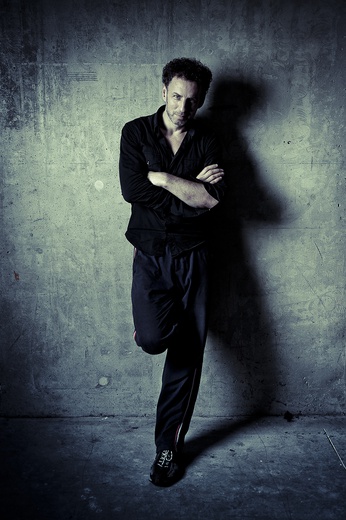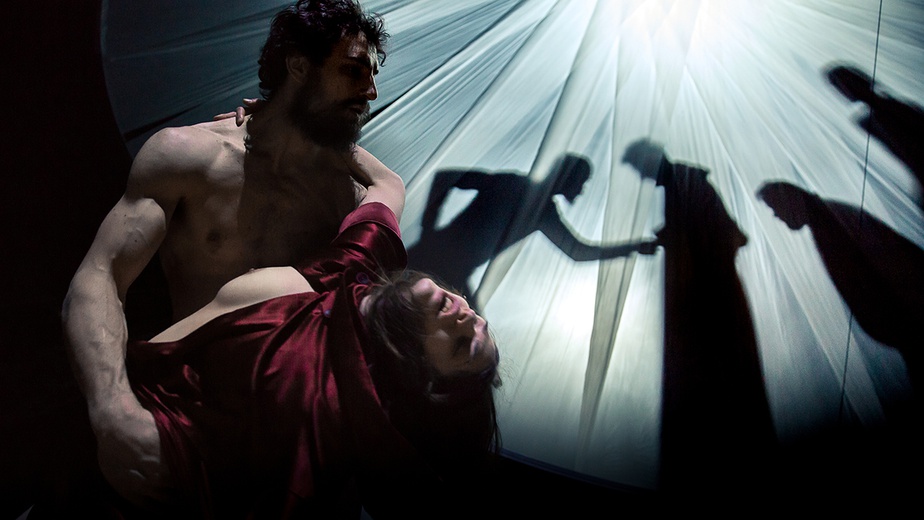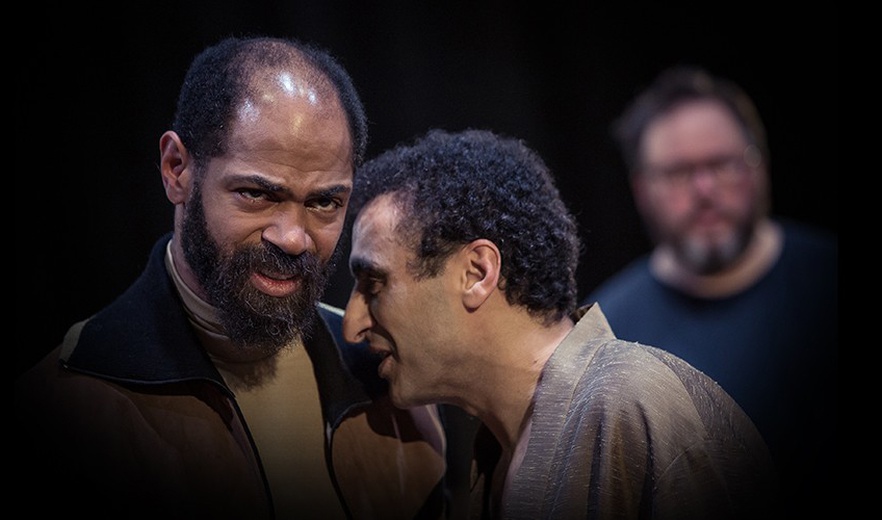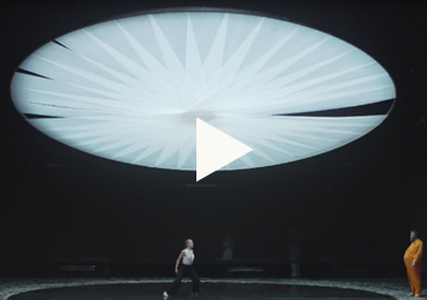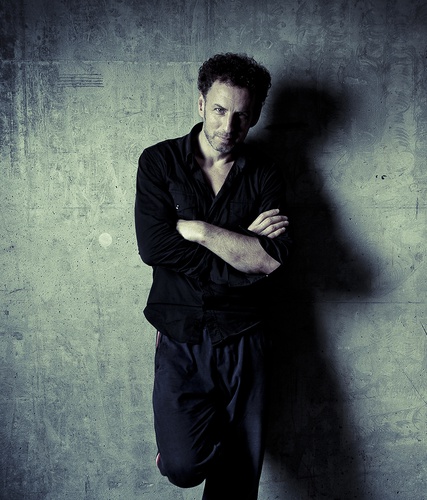At first, the pitch for Mockumentary of a Contemporary Saviour, the new show by Wim Vandekeybus, is reminiscent of a Hollywood blockbuster: an uncertain future, a post-apocalyptic world, and a savoir that emerges from chaos. Very quickly, we understand that things are not quite so simple: the subject is far more subtle, and the loud voice from the advertisements is tinged with a lucid irony (as seen in the title) combined with a tone taken from philosophical tales.
In this nightmarish universe, there is a bubble of safety, isolated from the rest of the world, within which humanity is "saved", even immortal. In this bubble—both a cocoon and a prison, heaven and hell—are seven people from diverse backgrounds. They were all brought to the bubble by the "contemporary messiah" announced by the title: a child who gave himself the mission, sacrificing himself, to scour the face of the earth to find as many survivors as possible and put them in this bubble where time is suspended and swaddled. This young boy, we never see him—sometimes we hear him—but he is omnipresent, in everyone’s mind. As their dances and conversations take place on stage, we see our 7 characters in distress, like a shattered portrait, where fact and fantasy, the real and the imagined intermingle.
In this skeletal and solitary Babel, existential questions are raised. Is immortality in the bubble, without any disorder, better than the dangerous life outside? Is humanity worth saving? Does the figure of the messiah suffice to continue to believe? To believe in life?
Technologies
In a decidedly unwelcoming future, images are forbidden. No representation is possible of the outside world or its contemporary savoir. Everything is communicated with sounds. And where a film would have used special effects—digital or not—Wim Vandekeybus uses IRCAM technologies. "The evocative power of sound is often stronger that that of an image. Here, everything is communicated with audio." A veritable "sound décor" was imagined by Charo Calvo and Manuel Poletti to represent the exterior world: a post-apocalyptic universe represented by white noise, where every event is reported thousands of times, until implosion.
By throwing characters with a range of origins and profiles together in an arena, Mockumentary of a Contemporary Saviour also plays with the concept of collective and cultural memory. Another aspect of the sound work consists of simultaneous translation using a computer and vocal synthesis; multiple languages coexist on stage without subtitles. This exploits the musicality of languages, vestiges (in this dystopian future) of disappeared cultures, without sacrificing understanding.
Past Experiences at IRCAM
Wim Vandekeybus has spent many hours below the place Stravinsky, notably in conjunction with his friend and colleague Thierry De Mey, with whom he often works. And the Spaniard Charo Calvo, in charge of the performance’s sound, has also done his stint underground. But this is the first official IRCAM project for Wim Vandekeybus.
By Jérémie Szpirglas, journalist and writor
Linked contents
Wim Vandekeybus
Director (b. 1963)
After studing psychology, Wim Vandekeybus auditioned for Jan Fabre who offered him a role in 1985. A year later, he founded Ultima Vez. “For me, the form needs to be diffe...

